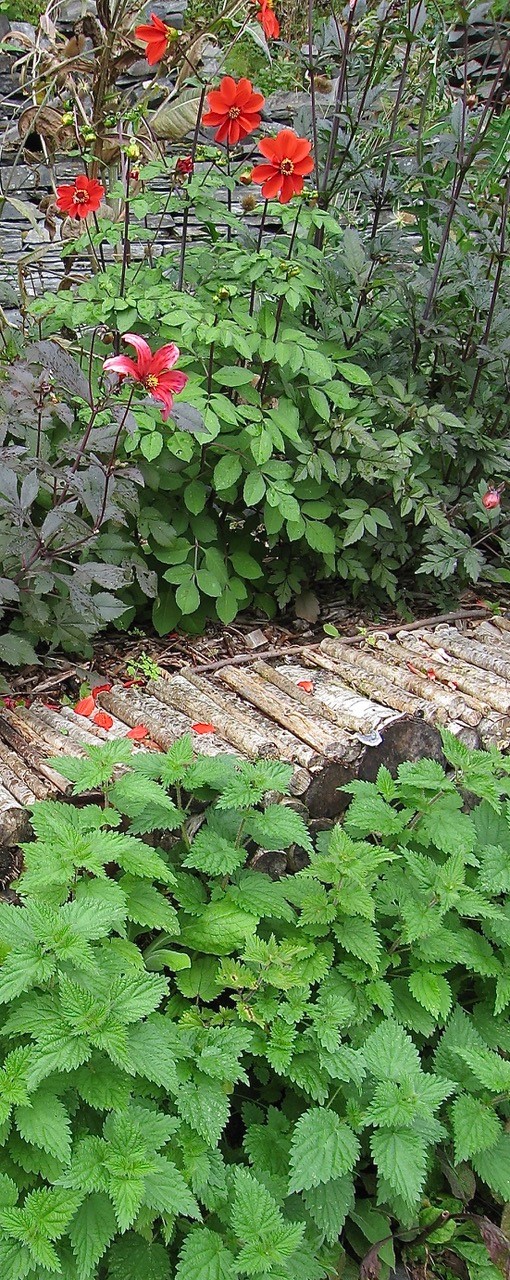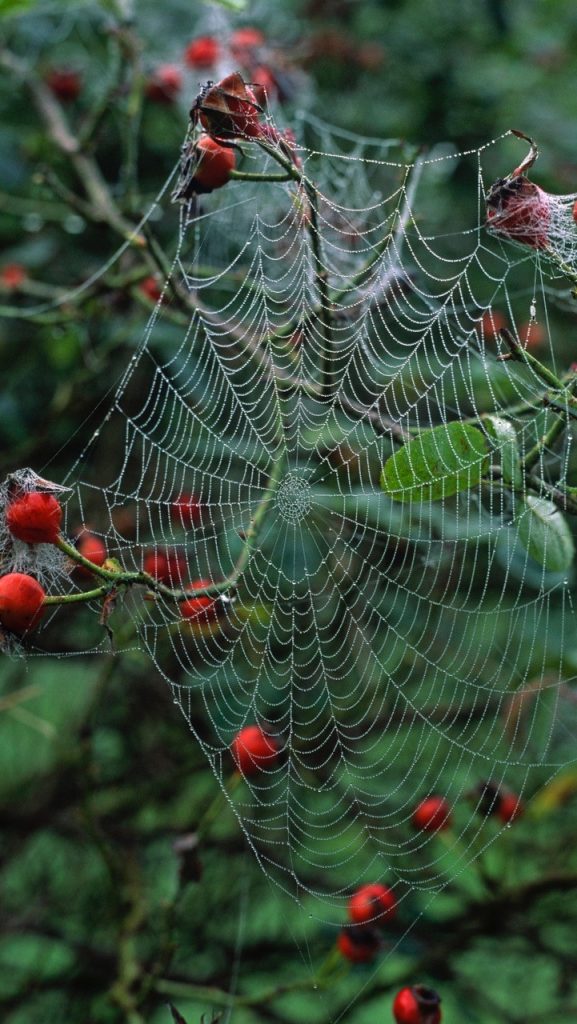A simple, radical idea to protect global biodiversity – keep half of the earth for us, and give half back to nature – could take root in our gardens and allotments.
Some ideas grab us gently by the throat and just won’t let go. The philosophy behind an idea, together with its aims and goals, can capture our imagination so much that it begins to seep subconsciously into our thoughts. If it’s fuelled by a palpable sense of urgency, that idea can colour anew the way we see the everyday world, imploring us to dream ‘outside the box’. The idea lodged in my head right now is urging me to think inside and outside of my garden – and way beyond its boundary.

I have been entirely swept away by the Half-Earth Project, and what this might mean for me as a gardener, tending a tiny speck of our earth in times of unprecedented ecological upheaval. The project – the brainchild of renowned American biologist and writer E. O. Wilson – has a simple goal: to commit half of the surface of the earth (land and sea) to nature. Its driving tenets are that if we are to protect global biodiversity – and arrest an extinction rate that is at least 1,000 times higher today than at any other time in earth’s history – we must set aside half of our biosphere for the species we share it with, and depend upon. Once this is achieved, the project estimates that 85% of the world’s species will be spared extinction, and that earth will enter the ‘safe zone’.
Although this is a huge, mind-changing conservation goal, it utilises sound scientific knowledge for ‘deep research’, and cutting-edge technology that is pinpointing the best places to protect and conserve the maximum number of species. Half-Earth’s underpinning philosophy is that our own species, which is now effectively the ‘mind’ of the living world, has a moral obligation to other life. Crucially, it also recognises that human life is interwoven with all of that other life, and that we need to understand and respect this deep coexistence – or risk losing our life-support systems, and the stability of earth itself.
It’s powerful stuff (do check out the Half-Earth website). I’m drawn to it because, over many years of both gardening, and writing about gardening and its place and role in our natural world, I’ve noticed my own efforts and instincts undergoing a subtle shift. I started out in horticulture as many bright-eyed youngsters do: being told it was essentially all about killing, clipping, containing, controlling, cleanliness… chip in your own must-do mantra. Nowadays I’m less into killing, containment and oh-so-tidiness, and more into gardening with nature, hand in glove, side by side. Giving, not taking, is my mantra now. As pressure grows on our life-support systems, and on our fellow species that also rely on them, I want my gardening efforts to enrich, not deplete. That’s why I can’t get the ‘half-earth’ idea out of my mind.

We don’t need to deploy the high-tech global wizardry of the Half-Earth Project to embrace its vision, and give half of our gardens or allotments back to nature. Yes, half. Half a lawn. Half a border. Half a path. Half a patio. Half a vegetable patch. Half a decked area. Half an allotment. Half a block-paved ‘parking area’. Half a polytunnel. Half a hedge (provided it’s not lifeless Leylandii). Half a greenhouse (that’ll need some canny thought). Half of your own unique speck of precious earth. Now, everywhere I go, I see gardens, front and back, big and small, cut in half; my mind’s eye is constantly slicing them up: half for us, half for nature. If this is what dreaming of more nature-attuned, earth-friendly gardening looks like – even with my eyes shut – let me dream on.
Where once there was green, mown and – let’s face it – biologically boring lawn, I see half of it erupting with colourful, flowering wildness, teeming with life, where voles scamper and hedgehogs grunt. With half of the slabs and/or decking ripped up and the incarcerated soil sprung free, bee- and insect-supporting flowers can bloom, and rain soak safely away. The life-boosting pond that you now share with your neighbouring allotmenteer (you get half each, spanning the half of the plot you gave up for nature) teems with slug-eating frogs, toads and newts, bathing birds, drinking bees, and airborne damsels and dragons. Nectar, pollen, and then autumn hips and berries abound on half of the deciduous hedge you’ve spared from the trimmer’s relentless chop.
And if half’s too much – or too much to start out with – how about committing a third, or a quarter, and adding more later? Nor do you have to hand over half of everything yourself. If you give half of your lawn over to wildness, your neighbour on one side might be tempted to grub up half of her paving slabs, while the one on the other could be coaxed into letting his hawthorn hedge bloom wild and free. It’s pretty flexible, this ‘half-earth gardening’ game. It could also become infectious, lifting the somewhat jaded idea of ‘wildlife gardening’ to a whole new, more collaborative plane.

Half-earth gardening’s key tenet can be interpreted in different ways. There wouldn’t be much to be gained from giving half of our wooden fence panels over to nature (unless we left them to the creep of ivy or, to the delight of woodpeckers, to crumble and decay). But what about committing to removing half of them, allowing wildlife to pass freely between neighbouring gardens? Let’s not just cut hedgehog-friendly holes in the base of fence panels – although that works a treat – let’s remove altogether half of the barriers to free movement, while retaining some privacy for ourselves. Who knows, we could end up with half a close or street, half a neighbourhood, half a village or town, half its public park, exuberant with the sights, sounds and spirit-lifting delight of wild lives.
It’s fanciful, perhaps, to imagine that giving up half of our gardening space is going to push back against the extinction crisis the Half-Earth Project hopes to arrest. Or is it? Our gardens, collectively, especially in urban areas, are generally far more ecologically diverse than the intensively-farmed land that often surrounds them. For some fellow species, such as hedgehogs, whose numbers have crashed in the countryside, gardens are one of their last, if still fragile, strongholds (whipping out half of those fence panels would help hugely).
Our gardens and allotments (especially the oh-so-untidy ones) are already vital living repositories for our fellow species. Some infuriate us (curse slugs), though most bring delight (cheer butterflies) – but we all rub along together; we coexist. Half-earth gardening would, at a stroke, allow wild lives to flourish on a bigger scale than ever before; it would be wildlife gardening with rocket boosters. And it would work beautifully in urban areas, where most of us live, enhancing and expanding the network of living, interconnecting corridors that our gardens, front and back, big and small, already are.
The more I think about this idea, the more fabulous and doable – rather than fanciful – it sounds. Half-earth gardening is easy (dividing a lawn in two is dead simple), practical, low-tech action for our ecologically turbulent times. So open your mind’s eye, get slicing, and help nudge earth toward the safe zone.
Text and images © John Walker
Find John on Twitter @earthFgardener


